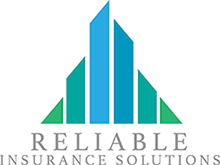You have worked hard to buy your pride & joy, make sure that you are adequately protected from loss or damage if the unforeseen occurs.
These are three common types of car insurance policies:
- Comprehensive cover: This covers the cost of repairs to or replacement of your own vehicle and property whether you are at fault or not. It can also cover the cost of emergency repairs, transportation costs and damage caused by other drivers.
- Third Party Fire & Theft cover: Third Party, Fire and Theft covers you for loss or damage to your car if it is stolen or catches fire in addition to your liability for damage caused by your car to other people’s property.
- Third party property cover: Covers damage that you have caused to another person’s vehicle or property. It does not cover the cost of damage to your own car. It usually includes legal costs, limited damage by uninsured drivers and claims service.
What is the difference between Agreed Value and Market Value?
Most insurers will give the option of market or agreed value in the event that your car is stolen or damaged and unable to be repaired.
- Market value represents the market value of the car at the time of the claim, taking into account the condition of the car based on its age, make and model.
- Agreed value is the value of the car as agreed by both you and the insurer and is fixed until the policy renewal date.
What is an Excess?
An excess is the amount you’ll have to pay in the event of a claim.
For example, if your excess is $500 and your claim is worth $1,200, you will pay the first $500 and the insurer the remaining $700. In the event of a more serious accident, in which your vehicle is written off, the excess amount will typically be deducted from the final claim payment.
Generally speaking, there are three types of excess:
- Basic excess: This is the minimum payment that you are obliged to make in the event of a claim. The excess amount will be specified on your Certificate of Insurance.
- Voluntary excess: This is an additional amount, on top of your fixed excess, that you agree to pay in the event of a claim. Increasing your excess effectively reduces the financial risk carried by your insurer, which should thereby lower your premium.
- Age (inexperienced driver) excess: Where an insurance policy features an inexperienced driver, or drivers under the age of 25 years, a higher excess will normally apply. This includes nominated drivers as well as the principal driver.


